7 Best Shoulder Press Variations (with Pictures!)
The shoulder press is iconic as the best method of building strong deltoid muscles. However, with just how many different kinds of shoulder press there are, picking the right one can be rather difficult.
Fortunately, the majority of these variants exist for distinctly different purposes. When planning a workout program, it is simply a manner of specifying your training goals.
While there is no true substitute for the conventional shoulder press, lifters with more specific training needs may see benefit from trying the push press, pin press or even the landmine press.
Each exercise features its own set of benefits and respective purposes, of which we’ve outlined below.
What is a Shoulder Press?
A shoulder press is simply a compound overhead extension exercise meant to target the deltoids, triceps and occasionally the pectoral muscles, depending on the variation.
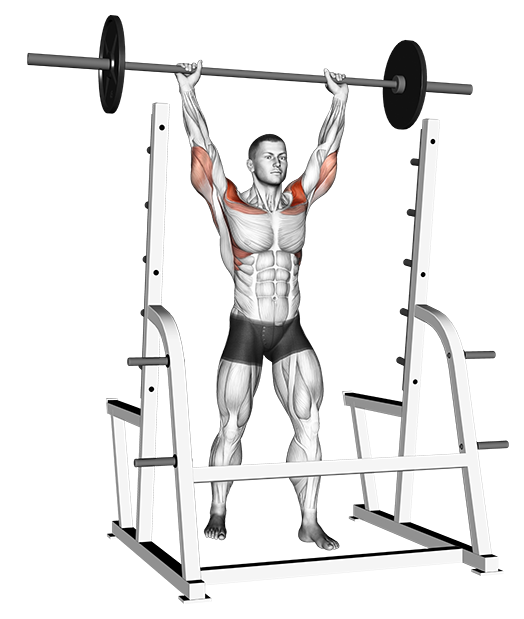
Otherwise known as the overhead press or the military press, the shoulder press is often loaded with a moderate to high amount of weight, and will traditionally make use of either a barbell or pair of dumbbells.
Shoulder presses are a vital component of any serious weightlifter’s training regimen, as they are not only an integral part of many weightlifting sports (i.e. Olympic weightlifting), but also a fundamental movement pattern in daily life.
Shoulder Press Variations
1. The Conventional Shoulder Press
Otherwise simply referred to as the “shoulder press”, the conventional shoulder press is the most basic and strictest variation of the exercise.
Conventional shoulder presses involve the lifter raising a weight up to full arm extension overhead, generally beginning around chin or neck height. This effectively targets the deltoids and triceps, serving as a general purpose training tool when programmed correctly.
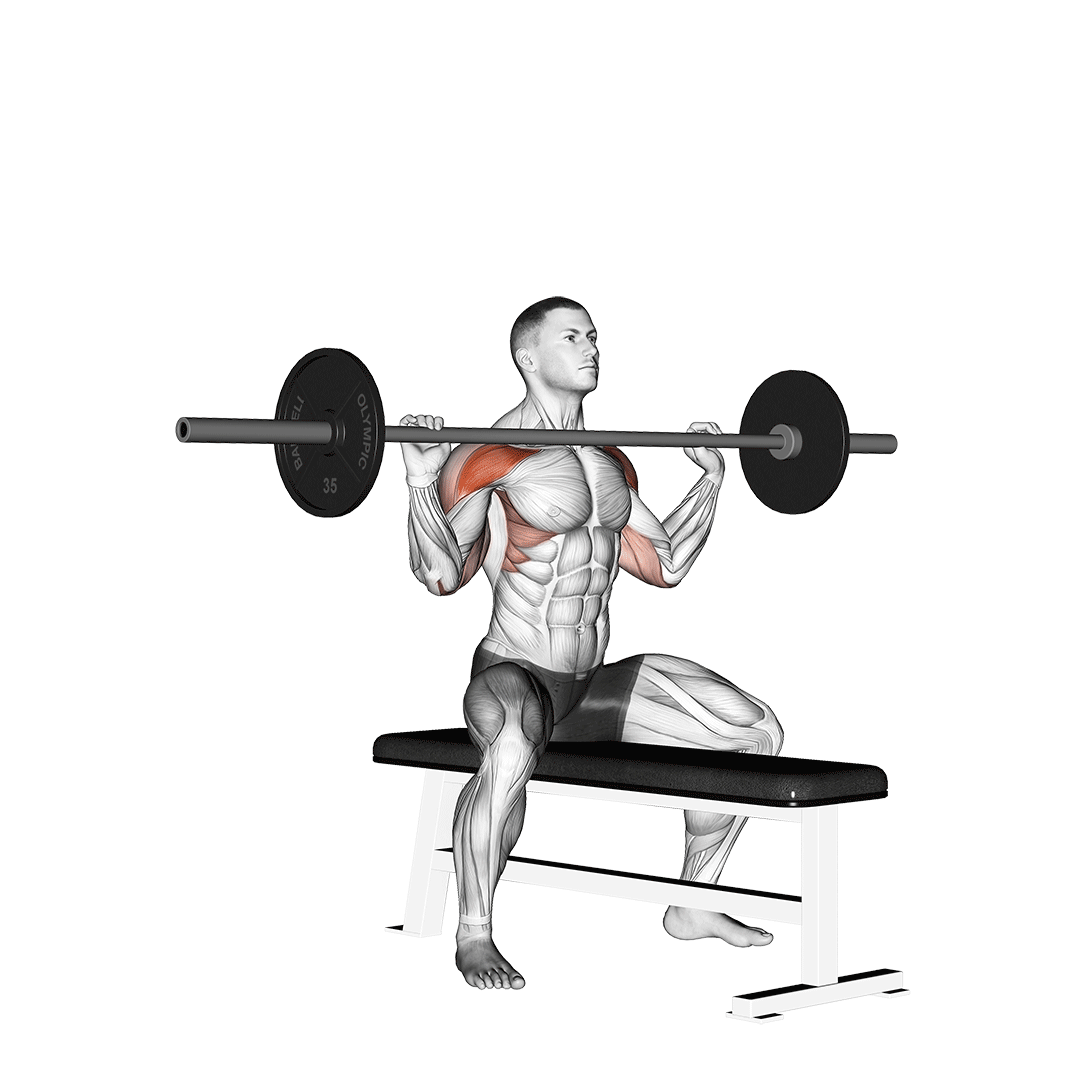
Like most other shoulder press variations, the conventional shoulder press is a compound open chain exercise that excels most as a free weight movement.
Muscles Worked
The regular shoulder press primarily targets the medial and anterior deltoid heads, but will also work the triceps brachii, trapezius, pectoral muscles and the posterior deltoid head as well.
Benefits as a Shoulder Press Variation
As a baseline variation, the conventional shoulder press is the best exercise for building fundamental strength and technical familiarity with overhead pressing movements. Novices should first master the shoulder press prior to trying exercises like the push press or overhead jerk.
Function as an entry-level exercise aside, there are few variants that compete with the conventional shoulder press in terms of gross time under tension. This makes it particularly useful for hypertrophying the shoulders as well.
How-to:
To perform the conventional shoulder press, the lifter will first unrack a loaded barbell to a point above their clavicles in a double overhand grip. If performing the exercise with dumbbells, a similar position should be adopted, with the dumbbells over the shoulders.
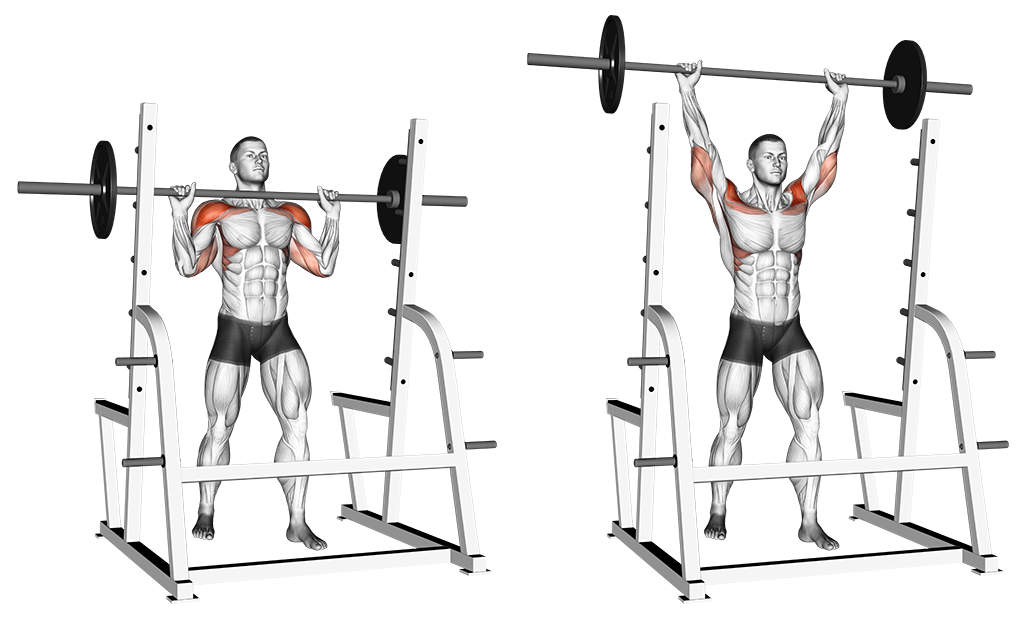
Contracting the core and squeezing the glutes for stability, the lifter then pushes through their palms and presses the weight upwards - driving through until their arms are fully extended overhead.
Once the arms are extended over the lifter’s head, they will pause for a moment before lowering the dumbbells in a slow and controlled manner.
When the weights have returned to their original starting position, the repetition may be considered complete.
2. The Push Press
The push press is a more explosive and rapid variation of the conventional shoulder press, making use of momentum generated by the lower body so as to powerfully drive a barbell overhead.
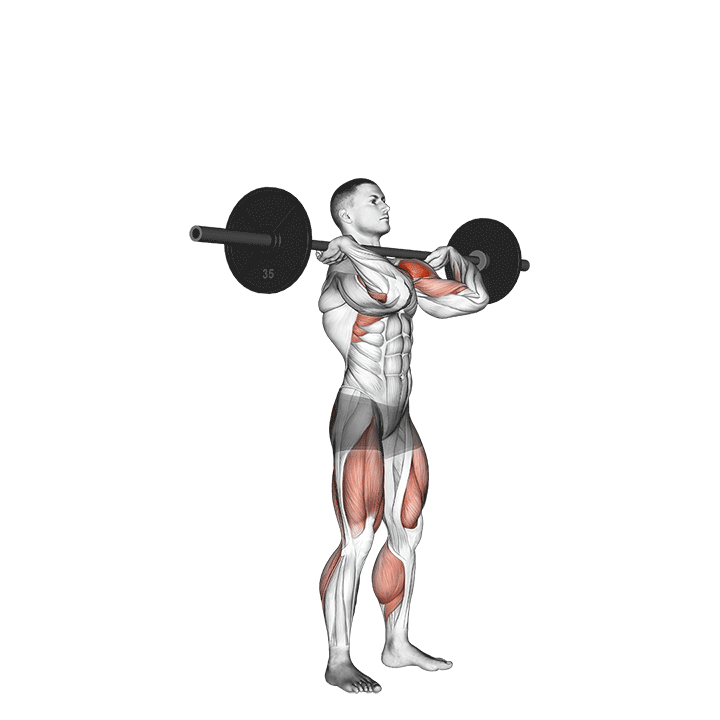
Apart from the inclusion of leg drive into the exercise, the push press remains otherwise the same as a conventional press, especially in regards to upper body positioning and mechanics.
Because the push press makes use of the lower body’s muscles for additional force, lifters will often load far more weight with the push press than they can safely use with the strict shoulder press. This is a vital benefit for quite a number of different types of athletes.
Muscles Worked
The push press works the deltoids and triceps to a slightly lesser degree than its strict counterpart, but does so in exchange for the inclusion of muscles like the quadriceps, glutes and calves.
Benefits as a Shoulder Press Variation
As mentioned previously, the push press is of particular benefit to powerlifters, strongman competitors and other types of athletes who wish to maximize overhead pushing explosiveness.
Such movement can be seen in a wide array of different activities, the most relevant of which are performed in Olympic weightlifting competitions, physically laborious jobs and CrossFit.
Apart from improving explosiveness, power and strength, the push press is also fundamental for learning more complex exercises that involve a similar pattern of movement, such as the push jerk or clean and press.
How-to:
To perform a repetition of the push press, the lifter will first rack a barbell atop their clavicles, positioning their hands wider than shoulder-width apart and their feet wider than hip-width apart, toes pointing forwards.
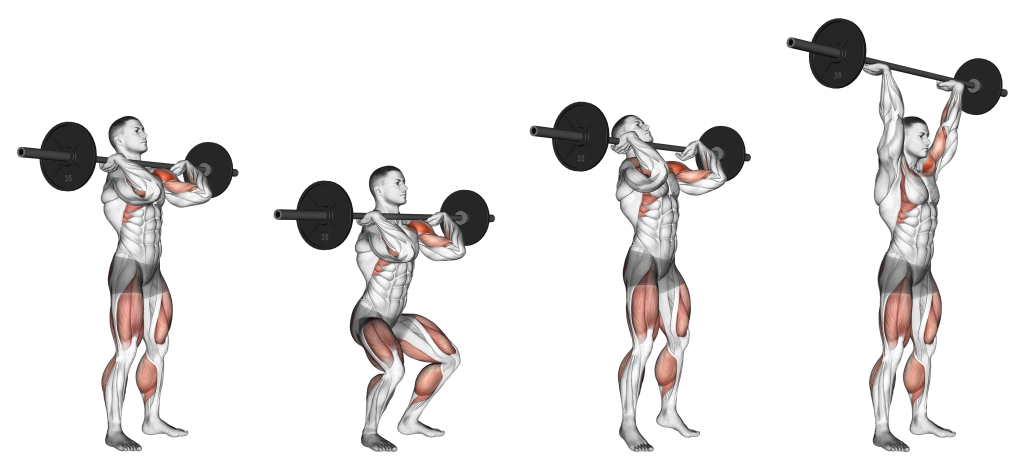
From this stance, the lifter will simultaneously press the barbell upwards as they rapidly dip at the hips and knees, generating momentum with their lower body and translating it into the upper body.
The lifter will follow through with this momentum until the bar is immediately overhead and the legs are fully extended once more.
Once at this point in the exercise, the repetition is considered complete. If performing the exercise with significant weight, it may be unsafe to lower the barbell in a controlled manner. Take caution when doing so.
3. The Landmine Press
The landmine press is a unilateral variation of shoulder press with a unique angle of resistance.
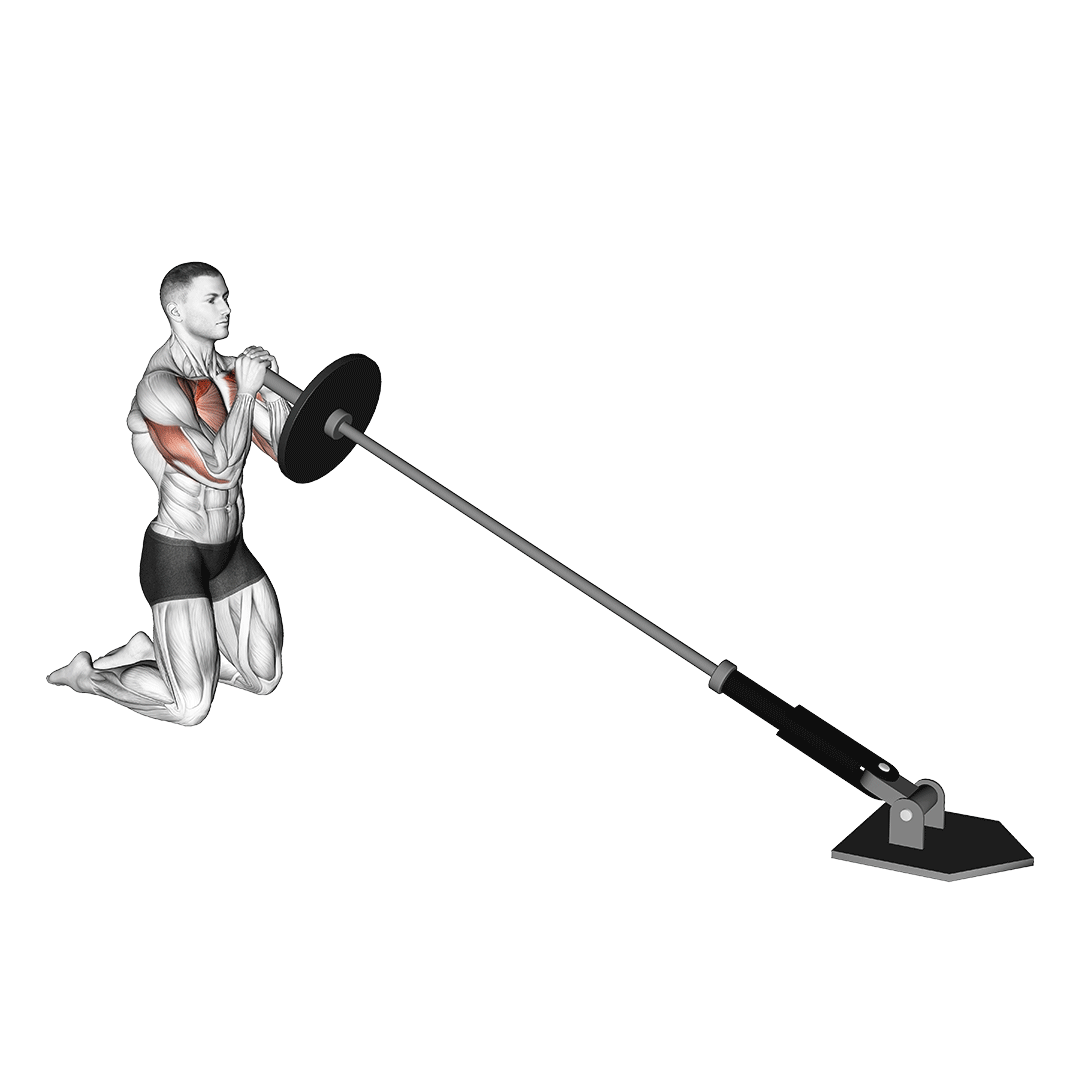
The landmine shoulder press is of particular note due to its capacity to correct muscular imbalances of the shoulders, especially in regards to the anterior deltoid head - of which is particularly emphasized during the movement.
Unlike other shoulder press variations, the landmine press involves the lifter only gripping one end of a loaded barbell, with the opposite end being placed in a landmine attachment.
Muscles Worked
The landmine press emphasizes the pectoral muscles and anterior deltoid head of one side of the body - while also targeting the triceps, medial deltoid head and core muscles as well.
Benefits as a Shoulder Press Variation
Landmine presses are unilateral, meaning that they train one half of the body at a time.
This allows for the lifter to divert more of their energy and focus towards training this singular side of the body. In addition, unilateral exercises are frequently used for correcting muscular imbalances.
Furthermore, the more forward angle of resistance caused by the landmine attachment allows the lifter to develop strength in a pressing direction that is rarely trained by other exercises.
How-to:
To perform a repetition of the landmine press, the lifter will first fit one end of a barbell into a landmine attachment, loading the other with weight plates.
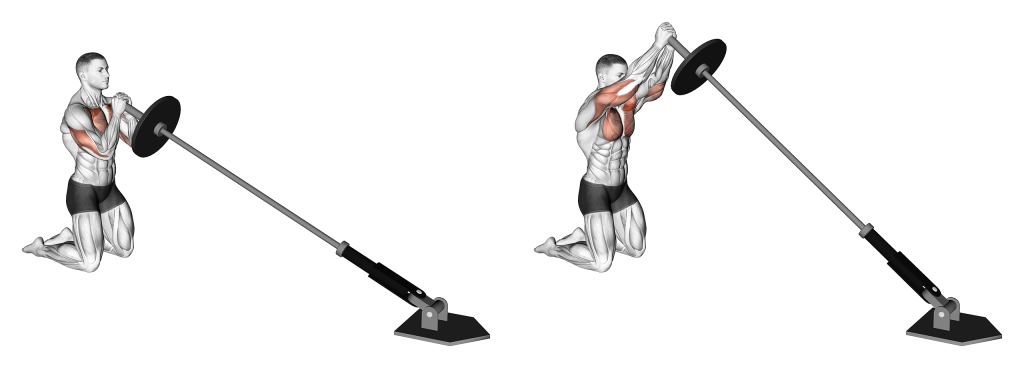
They will hoist it up to about chest-height with one arm, keeping their legs a stable distance apart and the spine neutral.
Once the barbell is positioned appropriately, the lifter will then press their arm upwards and forwards - keeping the forearm aligned with the wrist and the elbow close to the torso as much as possible.
When the arms are fully extended, the lifter then reverses the motion in a slow and controlled manner, bending the elbow once more until the bar has returned to chest-height. From this point, the repetition is considered to be complete.
4. The Push Jerk
The push jerk is a classic Olympic weightlifting exercise that doubles as a variation of the shoulder press due to their similarity in mechanics.

Much like the push press, the push jerk involves significant force and drive being taken from the lower body as the lifter presses the barbell overhead.
Where the two differ, however, is that the push jerk features the lifter dipping beneath the bar as they press it upwards.
Because of this seemingly small change in technique, the push jerk is more appropriate for lifters who are already technically skilled with other heavy overhead extension exercises.
Muscles Worked
The push jerk will train the muscles of the deltoids, triceps and pectorals alongside those of the quadriceps, glutes, hamstrings and calves.
Benefits as a Shoulder Press Variation
Apart from being relevant to the training needs of Olympic weightlifting athletes, the push jerk is also quite effective at building full-body explosiveness, power and coordination. This makes the exercise applicable for a wide variety of different training goals and programs.
How-to:
To perform a repetition of the push jerk, the lifter will first begin by gripping a loaded barbell in the front rack position. The hands should be placed wider than shoulder-width apart and the feet planted slightly wider than hip-width apart.
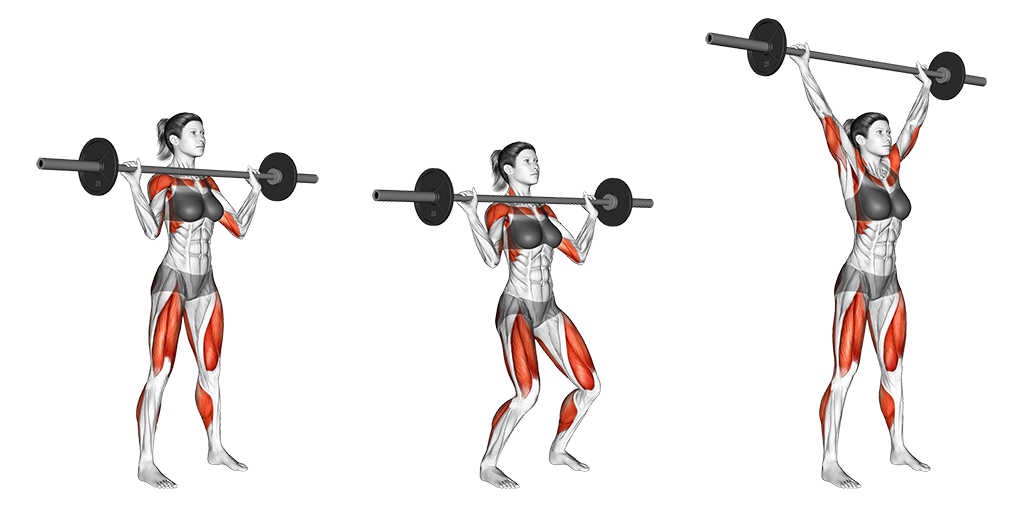
From this stance, the lifter will simultaneously perform a half squat as they explosively drive the barbell upwards. As the barbell rises over their head, the lifter will rotate their body beneath the bar, continuing to drive it upwards as they do so.
Once the lifter has repositioned themselves beneath the bar and extended their arms overhead, the lifter will release the barbell so as to complete the repetition.
5. The Shoulder Pin Press
The shoulder pin press (not to be confused with the pin press) is a specialized variation of shoulder press performed with the use of a barbell rack’s safety bars. This allows the lifter to shorten the exercise’s range of motion, beginning from the bottom half of the exercise.'
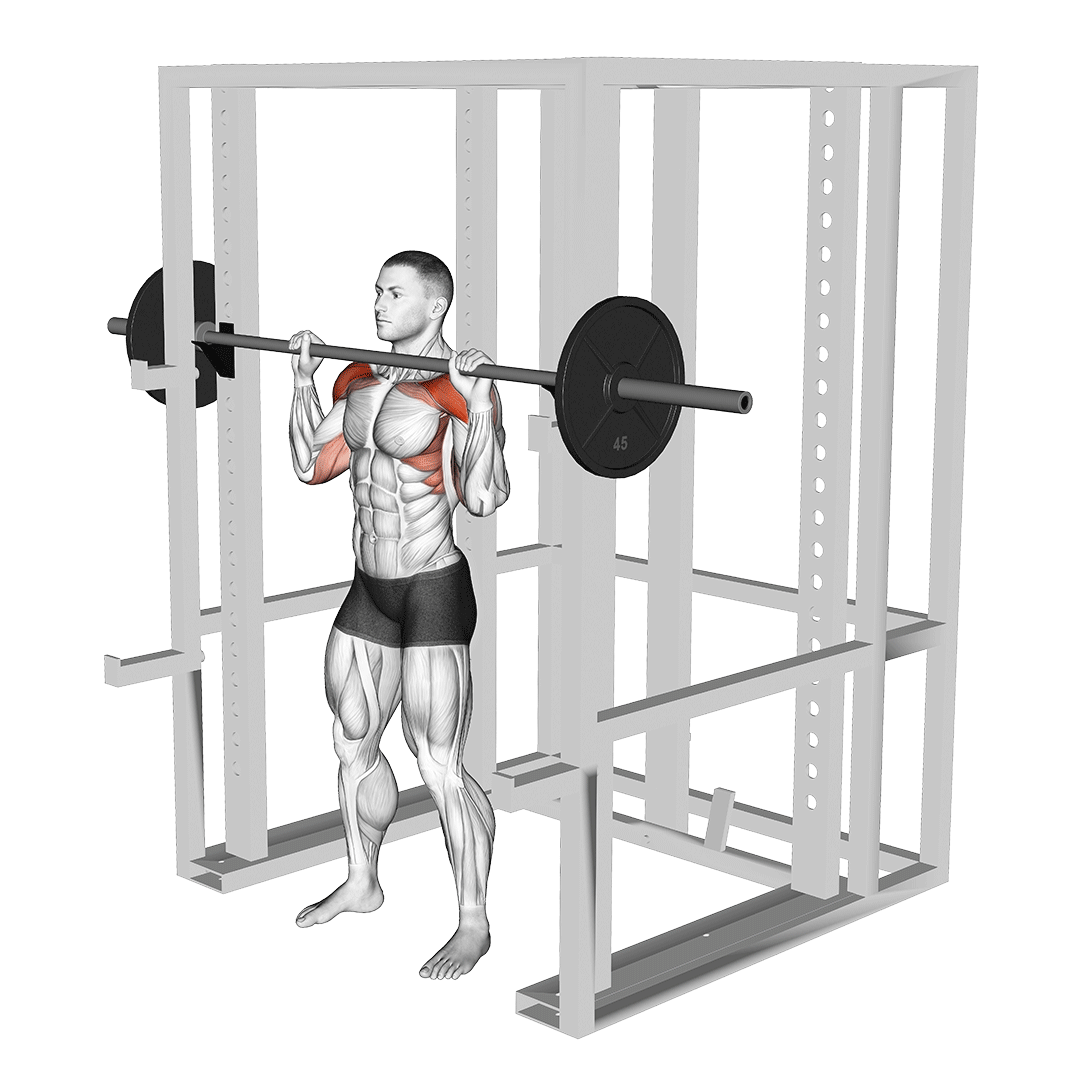
Most often, the shoulder pin press is used by weightlifting athletes to correct sticking points, technique imbalances or poor force production through a certain portion of the conventional shoulder press.
The altered range of motion and starting point provided by the rack’s safety pins lets the lifter focus on only a certain portion of the shoulder press itself.
Muscles Worked
Depending on the position of the safety bars, the exercise will either work only the triceps and deltoids - or also include the pectoral muscles, but to a lesser extent.
Generally, the higher the starting position, the less chest and deltoid recruitment is used.
Benefits as a Shoulder Press Variation
As touched upon earlier, the shoulder pin press is performed so as to correct issues in the execution of shoulder press variations.
As a side effect, a shorter range of motion also means that more weight can be lifted - further aiding with specificity of the training stimulus.
However, the shoulder pin press can also be used by individuals who cannot perform the bottom half of a shoulder press’s range of motion due to injury.
If doing so, remember to first seek out the approval of a physician prior to training while injured.
How-to:
To perform a shoulder pin press, the lifter simply needs to set the safety bars of a barbell rack at least shoulder-height while standing, placing a loaded barbell atop them once secured.

Then, the exercise proceeds as normal, with the lifter placing their hands around shoulder-width apart along the bar and pressing it off the safety bars until their arms are fully extended.
Once pressed up, the lifter can complete the repetition by slowly lowering the bar back to the safety pins.
Remember that - depending on your needs - the safety bar’s position can be adjusted. If you suffer from issues with overhead press lockout, set the bars higher. Likewise, if your shoulder press is unstable mid-press, set the bars just under the weak point in the range of motion.
6. The Z Press
The Z press (AKA the Zydrunas press) is yet another technical variation of shoulder press performed so as to maximize recruitment of the entire deltoid muscle group.
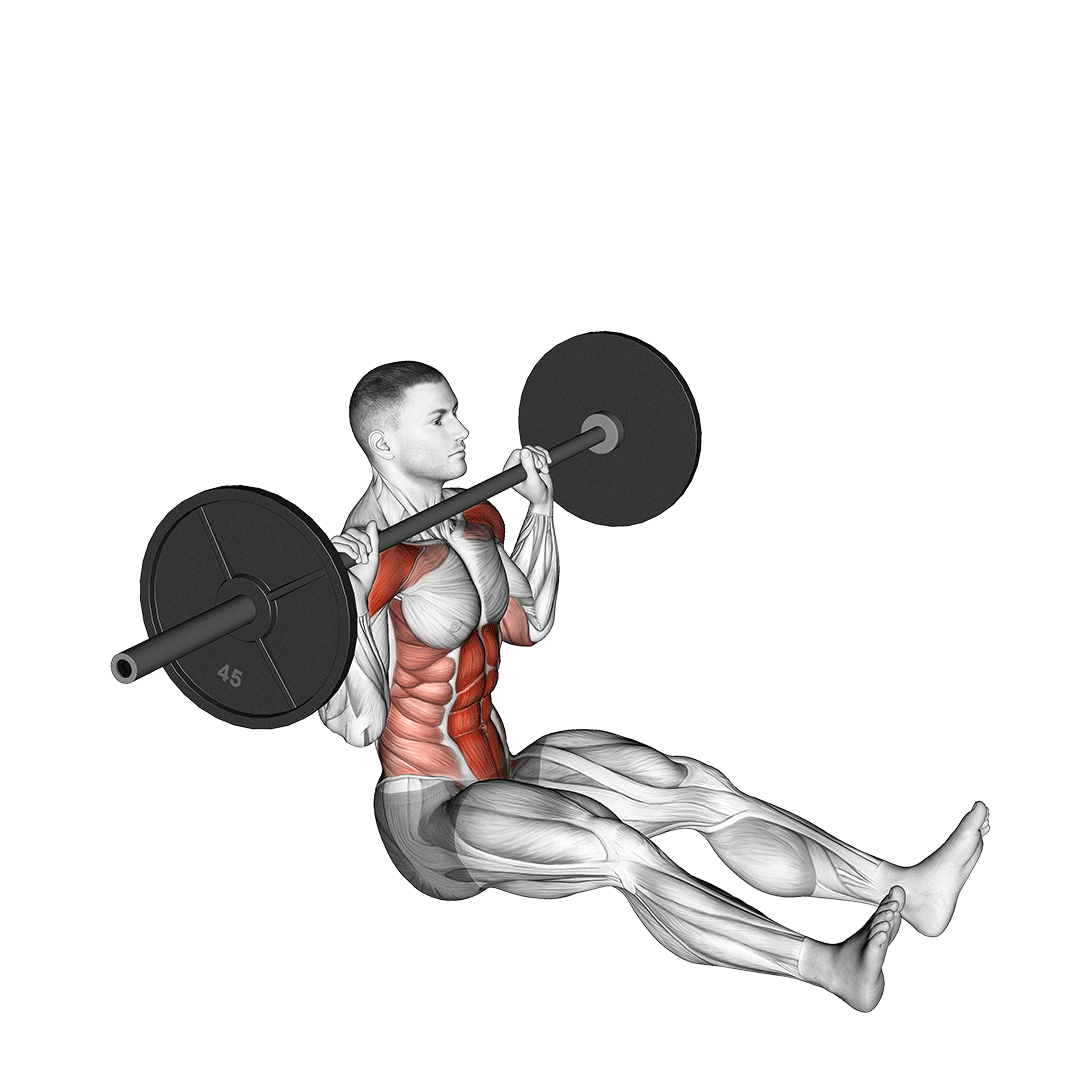
While the main focus on overhead arm extension remains much the same, the Z press is made distinct by having the lifter perform the exercise seated on the ground. Furthermore, the exercise includes a “shrug” movement at the terminal point of the rep.
Because of how comprehensive the Z press can be, advanced lifters often use it as a direct substitute to the traditional shoulder press.
Muscles Worked
The Z press targets the deltoids, triceps brachii and pectoralis while simultaneously also hitting the trapezius.
Benefits as a Shoulder Press Variation
The Z press both eliminates the risk of “cheating” the shoulder press repetition through leg drive, as well as helps keep the back and spine stable by seating the lifter throughout the set.
In addition, the Z press is quite effective at working the core and erector spinae as stabilizers, as the lower body is not used to stabilize the movement.
How-to:
To perform a repetition of the Z press, the lifter will sit themselves on the ground, spreading the legs wide for balance. A barbell should be positioned atop their chest shelf in the front rack position, with the hands set shoulder-width or slightly wider apart.
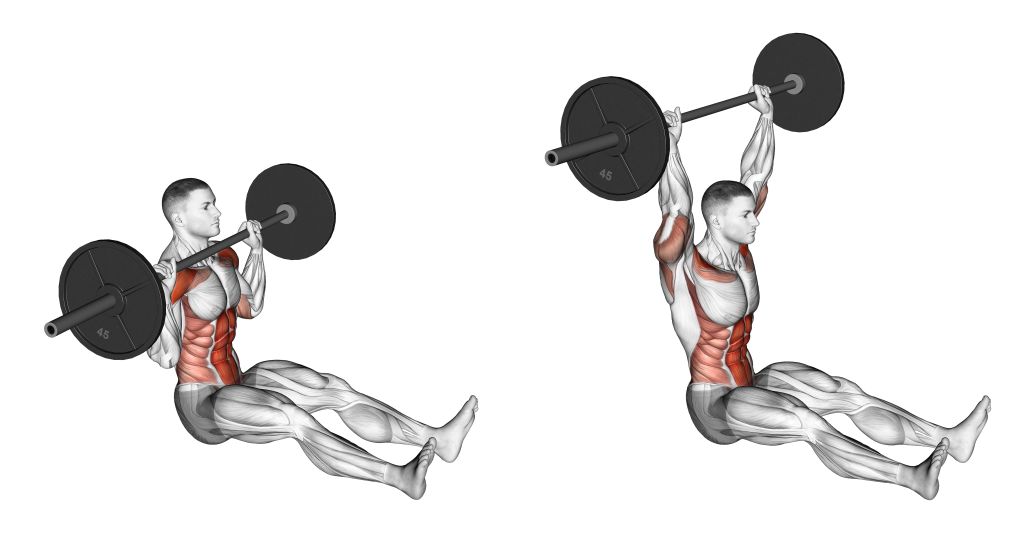
Now in the correct stance, the lifter will rapidly push the barbell upwards by driving through their palms, keeping the elbows aligned with the wrists as they do so.
Once the arms are fully extended overhead, the lifter will then squeeze with their trapezius prior to lowering the bar back down to the starting position.
This completes the repetition.
7. The Arnold Press
The Arnold press - named so after Arnold Schwarznegger - is a unique dumbbell shoulder press variation that targets all three heads alongside the biceps and triceps. This unusual muscular recruitment set has made it a favorite among bodybuilders and weightlifters who find themselves strapped for time.
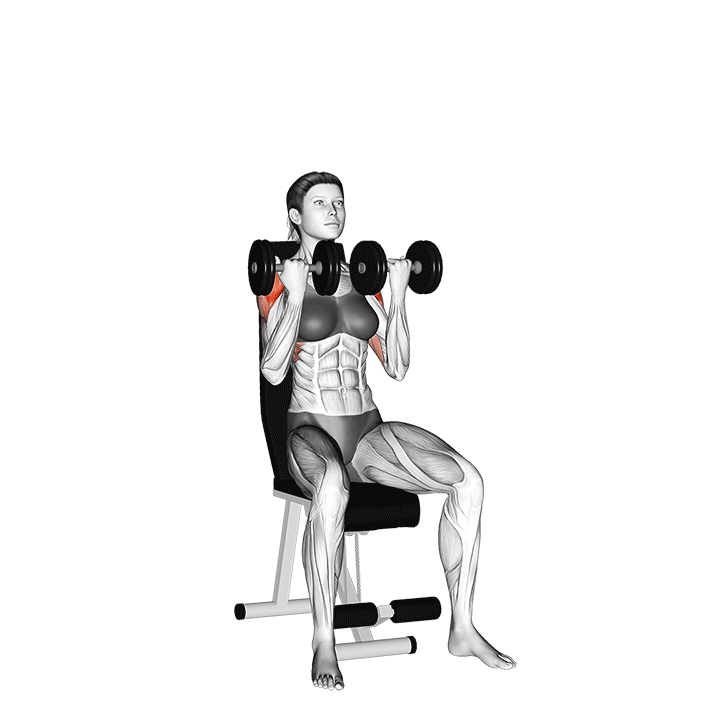
Being a dumbbell-based variation, the exercise can be performed bilaterally or unilaterally, and is meant to only make use of moderate amounts of weight at most.
Muscles Worked
The Arnold press targets the biceps, and triceps alongside all three heads of the deltoids.
Benefits as a Shoulder Press Variation
Apart from being a time-saver and excellent for bodybuilding, the Arnold press is also quite effective at working the muscles of the deltoids and arms through ranges of motion that are underutilized in most training programs.
How-to:
To perform a repetition of the Arnold press, the lifter will first raise the dumbbells in an underhand grip to their shoulders.
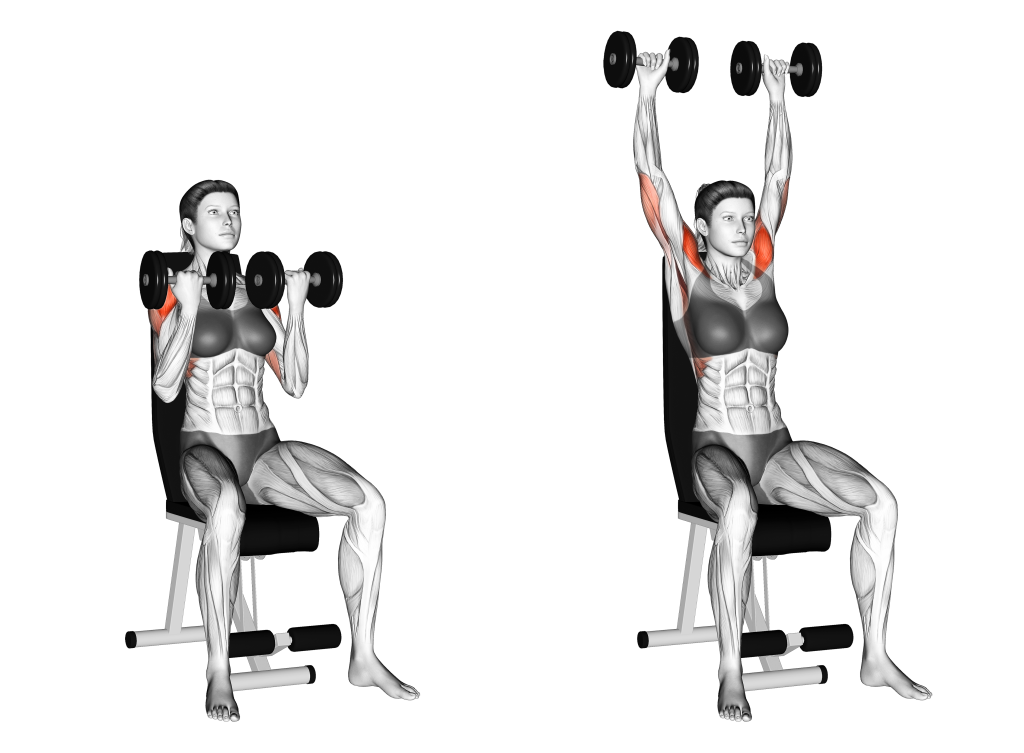
From this position, the lifter will press the dumbbells upwards until their elbows are fully extended, rotating their hands until their wrists are in a pronated orientation at lockout.
To complete the repetition, the lifter will then simply lower the dumbbells back down to shoulder-height.
Which Shoulder Press Variation is Right For You?
While we’ve advised at the start of this article to first master the conventional shoulder press - if you’ve already done so, it’s likely that this advice doesn’t quite apply.
Instead, the best route to take will be to select an exercise that better focuses on any weak points that you may be suffering from. Performing these exercises as a secondary compound movement to the conventional variation will help take your progress even further.
References
1. NSCA's Essentials of Tactical Strength and Conditioning. United States: Human Kinetics, 2017. ISBN: 9781492585701, 149258570X
2. Soriano, M.A., Suchomel, T.J. & Comfort, P. Weightlifting Overhead Pressing Derivatives: A Review of the Literature. Sports Med 49, 867–885 (2019). https://doi.org/10.1007/s40279-019-01096-8
